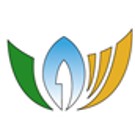Macao has a warm and humid weather in Chinese New Year of 2019. According to the statistics of Macao Meteorological and Geophysical Bureau, there were only 18 days with a cold temperature of 12.5℃ or below during the winter months of Macao in 2018. It was the year that Macao has had the least number of low temperature days since 1952. Obviously, climate change is already taking its toll locally. As emphasised in the publication “Food Safety - Climate Change and the Role of WHO” released by World Health Organisation (WHO) in January 2019 and “The First International Food Safety Conference” convened by the Food and Agriculture Organization of the United Nations (FAO), the WHO and African Union (AU) in Ethiopia, it states that climate change is likely to have considerable impact on food safety, both direct and indirect, placing public health at risk.
According to WHO, “Already today, an estimated 600 million – almost 1 in 10 people in the world – fall ill after eating contaminated food and 420,000 die every year. A figure that may grow due to changes in the climate that alter the agricultural and manufacturing environment, as well as influence human, animal and pest behaviours”1. The key points in this article are mainly derived from the likely impacts of climate change on food safety, elaborated in the publication “Food Safety - Climate Change and the Role of WHO” released by WHO, for readers to gain a preliminary understanding of the relationship between climate change and food safety hazards.
The likely impacts of climate change on food safety:
-
Increase the chance of water and food being contaminated
Climate change is expected to lead to increase the chance of bacterial, viral and pathogenic contamination in water and food, as the features of their survival and transmission patterns are altered through changing weather characteristics (e.g. temperature and humidity). In addition, the use of contaminated water for irrigation can undermine the safety of crops, animals that consume the crops, and their resulting food output. Moreover, the changes in ambient temperature, humidity and ocean temperatures alter the growth patterns of mycotoxins and phycotoxins. It increases the risk of crop contamination with mycotoxins and the presence of phycotoxins in marine organisms, resulting in acute toxic effects and chronic health problems in humans and livestock.
-
Increase the risk of zoonotic diseases
Climate change leads to alter the survivability of pathogens, vector-borne diseases and parasites in animals; cause deaths to marine life; increase the use and residue levels of veterinary drugs in animal-derived foods. This not only poses acute and chronic risks to human health but is also directly linked to increase the antimicrobial resistance of pathogens in human and animal.
-
Residues of pesticides and environmental contaminants in food
With shifts in farming systems and farmers’ practices to adapt to the changing climate, the application of pesticides and the subsequent residues in food have been evolving an ongoing concern. Besides, the increased frequency of inland floods linked to climate change may lead to the contamination of agricultural and pastureland soil by chemical contaminants, such as pesticides, heavy metals and dioxins, further impacting on food safety.
-
Food production crisis
Climate change contributes to extreme weather events, such as droughts and floods, which cause a decrease in farmlands and in turn affect food production and supply.
As the Macao government agency responsible for food safety supervision and regulation, IAM’s food safety task always put the food hazard prevention and risk reduction in the first priority. Since our city is highly dependent on imported food supply, with climate change being a global issue, IAM will closely monitor the impact of climate change on food safety in Macao, and adopt preventive and control measures against any potential food hazard if necessary.
Note:
1. “WHO Estimates of the global burden of foodborne diseases”, World Health Organization, Geneva, 2015.
(http://apps.who.int/iris/bitstream/handle/10665/199350/9789241565165_eng.pdf?sequence=1.)








